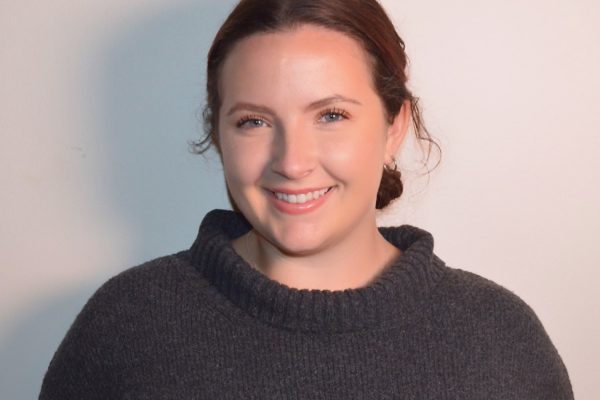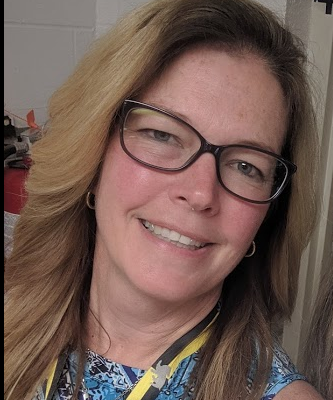The following article is reposted from its original with permission of author, Lauren Cahill.
 When I first saw a tweet from ISTE that they were working on an educator’s certification, I texted my department manager and said, “Let’s do this.” The truth is, I am a certification collector and I knew enough about the ISTE standards to know that the certification would be relevant to my work as an ed tech coach. At that point, I had no idea how pivotal this process would be for me, my department, and my school district.
When I first saw a tweet from ISTE that they were working on an educator’s certification, I texted my department manager and said, “Let’s do this.” The truth is, I am a certification collector and I knew enough about the ISTE standards to know that the certification would be relevant to my work as an ed tech coach. At that point, I had no idea how pivotal this process would be for me, my department, and my school district.
The Logistics
- ISTE Educator Certification is currently offered by about a dozen ISTE Certified Providers in the United States and internationally. These providers have gone through the certification and use ISTE’s resources to support the face-to-face and online portions of the process. If you are interested to see if there is a provider near you, check here or contact ISTE for more information.
- The learning formats vary throughout the process. All candidates attend a two-day, face-to-face session full of thought-provoking, interactive work. That is followed by five online modules with new content and participant discussion. Following that, candidates are given access to an alignment map and have six months to create and submit artifacts that demonstrate mastery of each standard indicator.
- The cost varies depending on the certified provider but falls somewhere between $700-$800 per candidate.
The Benefits
- I can count on one hand the number of PD opportunities that engaged me the way the face-to-face ISTE Certified Educator sessions did. Perhaps that was because we had amazing trainers in Casey and Suzanne from the Collaborative for Educational Services in Massachusetts or perhaps because the content is really that good. Likely, it’s both.
- The process is all about pedagogy because the ISTE Educator standards are all about teaching and learning. Yes, ISTE operates through the lens of technology but we could very well have been focused on the ways students can use a pencil rather than Chromebooks, digital programs, and social media and still had the same rich conversations about what makes good teaching for all students. I can see the value of this process for teachers of all grade levels and content areas…not just technology teachers and coaches.
- Because of the format, the learning doesn’t stop (or even pause) when the face-to-face sessions end. The online modules start right away and there’s a huge value to already having formed relationships with your classmates as you work through online content and discussions. (Had I only “met” the other participants during the online portion it is unlikely that our conversations would have been as honest and specific for fear of being misunderstood by a “stranger”.)
- The artifact portfolio is hard. Really hard. Hard enough that you have to be extremely purposeful in your work. Hard enough to know that you are creating meaningful artifacts that will impact your professional practice. Personally, I loved (and sometimes hated) the portfolio because just when I would think an artifact was complete, the accompanying written piece would force me to reflect on the fact that my evidence wasn’t as strong as I originally thought. I learned as much about myself as a learner and coach as I did about the ISTE Educator standards.
- The work is meaningful and fits into a greater context. Because my department worked through this certification together, it took us all of ZERO seconds to realize that our new learning would elevate our practice as an instructional technology team, thus impacting teachers and students. In the last six months we have worked to create a K-5 technology course scope and sequence and to recreate the grade 6-8 version. I shudder to think what this would have looked like or how we could have supported teachers without this in-depth knowledge of the ISTE Educator (and Student) standards.
What now?
Until recently I had no idea how many other people had gone through this process or who they might be. I was fortunate to attend the annual ISTE Conference and our team registered to attend the ISTE Certified Educators session on the Monday night of the conference, curious to find out what information they may have for us about maintaining our certification. (What are they going to make us do now??) To say we felt celebrated at that session is an understatement. We found out that there are currently only 185 ISTE Certified Educators worldwide BUT another 1680 are in the process. 50 of us were present in the room and we had a chance to give our honest feedback of the process and get know each other.
Nicole Cooper and I made this (very spur-of-the-moment) video to explain why we love the ISTE Certification!

The following day my department manager, Sarah Kyriazis, presented on the ISTE Learning Stage about our process and how it has impacted so much of what we do and other educators came up to ask us questions about its value. At that point, I decided that I would share out my thoughts in the hope that other educators will see how this certification can really have an impact on their students and classrooms.
Image credit: Suzanne Judson-Whitehouse
You had probably heard about the ISTE Educator Certification and maybe you have even been considering it. If so, start here to find out more about it and find a Certified Provider. Please reach out to me directly if you have specific questions or just want to talk it through. I would be glad to support you along the way!
Laura Cahill is a district technology coach and former visual art educator in the Worcester Public Schools as well as a lecturer at Assumption College. She is a Google Certified Trainer and ISTE Certified Educator, who is an advocate for equitable access to technology for all students. Laura is also the proud mom of two college students and enjoys blogging and reading about educational technology topics. You can find her at engageducate.com or on Twitter at @engageducate
 Print this post
Print this post



